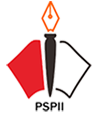Tekstualitas dan Kontekstualitas Metodologi Baca Tulis Al-Qur’Än (BTQ): Studi Teks, Bahasa dan Sejarah
DOI:
https://doi.org/10.15575/ath.v6i1.10809Keywords:
Alphabet hijaiyyah, Arabic language, Textbook-method, Reading and writing al-Qur'ÄnAbstract
Abstract: This article aims to examine the learning textbook for reading and writing al-Qur'Än at the primary level from the perspective of teaching foreign languages. Because this study focuses on books on the method of learning to read and write al-Qur'Än, the text study is the methodological choice in this research. Apart from language, the writer also uses history in this study as a material for discussion and concluding. The results of this study indicate that the books or methods of reading and writing al-Qur'Än are not final, especially in teaching Arabic phonetics for speakers of Indonesian (non-Native Speak Arabic). The final review of this paper implies that there is a difference in the concept of learning methodology for reading and writing al-Qur'Än between memorizing, reading and writing hijaiyyah letters. On a large scale, the compilers of the book needed to re-develop the tarÄ«b of these letters. While on a small scale, it is enough for teachers or educators to modify the tarÄ«b in the form of demonstrations and the like.
Â
Abstrak: Artikel ini bertujuan untuk menelaah buku teks pembelajaran baca tulis al-Qur’Än pada tingkat dasar dengan perspektif pengajaran bahasa asing. Penelitian ini menggunakan metodologi studi teks yang ditunjang dengan pendekatan sejarah dan bahasa sebagai bahan diskusi dan penarik kesimpulan. Hasil dari penelitian ini menyatakan bahwa metode yang digunakan dalam buku-buku pembelajaran Baca Tulis al-Qur’an (BTQ) belumlah final.khususnya dalam pengajaran fonetik Arab bagi penutur Bahasa Indonesia (non-Native Speak Arabic). Implikasi dari ulasan akhir tulisan ini ialah adanya perbedaan konsep metodologi pembelajaran Baca Tulis al-Qur’Än antara menghafal, membaca dan menulis huruf hijaiyyah. Dalam skala besar para penyusun buku perlu untuk mengembangkan kembali tarÄ«b huruf-huruf tersebut. Sedangkan dalam skala kecil, cukup para guru atau pendidik yang memodifikasi tarÄ«b tersebut dalam bentuk peraga dan semisalnya.
References
Acep Hermawan. (2011). Metodologi Pembelajaran Bahasa Arab (Cet. 1). Remaja Rosdakarya.
Hardivizon, H., & Anrial, A. (2016). Tinjauan Terhadap Upaya STAIN Curup Dalam Meningkatkan Kemampuan Baca Al-Qur’an Mahasiswa. FOKUS Jurnal Kajian Keislaman Dan Kemasyarakatan, 1(1), 67–86. https://doi.org/10.29240/jf.v1i1.65
Hassan, T. (1994). Al-Lughah al-’Arabiyah Ma’nÄhÄ wa MabnÄhÄ. Dar al-ThaqÅfah.
Helmanita, K. (2016). Hambatan Membaca Aksara Arab Bagi Anak Disleksia di Sanggar Baca Jendela Dunia. Buletin Al-Turas, 22(2), 303–323. https://doi.org/10.15408/bat.v22i2.4047
Ibn SÄ«nÄ. (n.d.). RisÄlah AsbÄb ḤudÅ«th al-ḤurÅ«f (Muhammad HassÄn ṬayyÄn, Ed.). Majma’ al-Lughah al-’Arabiyah.
Ibn Taimiyah. (n.d.). Iqtiá¸Ä’u al-á¹¢irÄá¹ al-MustaqÄ«m li MukhÄlafat AṣḥÄb al-Jaḥīm. Maktabah al-Rashd.
Ibrahim al-FauzÄn. (2011). IẓÄ’Ät li Mu’allimÄ« al-Lughah al-’Arabiyah li Ghairi al- Naá¹iqÄ«na BihÄ. al-’Arabiyah li al-Jamī’.
Jauhar, N. I. (2014). ’Ilm al-AshwÄt li DÄrisÄ« al-Lughah al-’Arabiyah min al-IndÅ«nisiyyÄ«n. Lisan Arabi.
Jiniy, I. (2000). Sirr á¹¢inÄ’ah al-I’rÄb (H. HindÄwiy, Ed.). DÄr al-Kotob al-’Ilmiyyah.
Lachmann, T. (2018). Reading and Dyslexia: The Functional Coordination Framework. In T. Lachmann & T. Weis (Eds.), Reading and Dyslexia: From Basic Functions to Higher Order Cognition (Vol. 16). Springer International Publishing. http://link.springer.com/10.1007/978-3-319-90805-2
Lathifah, F., Syihabuddin, S., & Farisi, M. Z. A. (2017). ANALISIS KESALAHAN FONOLOGIS DALAM KETERAMPILAN MEMBACA TEKS BAHASA ARAB. Arabiyat : Jurnal Pendidikan Bahasa Arab dan Kebahasaaraban, 4(2), 174–184. https://doi.org/10.15408/a.v4i2.6273
Musfiroh, T. (2008). PENGENALAN BAHASA TULIS BERBASIS PEMEROLEHAN UNTUK ANAK KB DAN TK. Diksi, 15(1), Article 1. https://doi.org/10.21831/diksi.v15i1.6558
Ramaá¸an Abd al-TawwÄb. (1997). Madkhal ilÄ â€™Ilm al-Lughah wa ManÄhij al-Baḥth al-Lughawiy. Maktabah al-KhanjÄ«.
Ramadani, R. (2015). MEMBACA PERMULAAN MELALUI KEGIATAN MENEBALKAN HURUF. Jurnal Pendidikan Anak, 4(1), Article 1. https://doi.org/10.21831/jpa.v4i1.12346
Rosyidi, A. W. (2010). ’Ilm al-Aá¹£wÄt al-Nuá¹qiy. UIN-Maliki Press.
Rushdi Ahmad Ṭu’aimah. (n.d.). Al-Marja’ fi Ta’lÄ«m al-Lughah al-’Arabiyah li al-NÄá¹iqÄ«n bi Lughat al-UkhrÄ. JÄmi’ah Ummu al-QurÄ.
Santi, K. L., Reed, D. K., & Massey, D. D. (Eds.). (2015). Reading History: Moving from Memorizing Facts to Critical Thinking. In Improving Reading Comprehension of Middle and High School Students (1st ed. 2015). Springer International Publishing : Imprint: Springer. https://doi.org/10.1007/978-3-319-14735-2
Setiawan, A. I., & Pratama, M. A.-Q. (2018). Karakteristik Pendidikan Islam Periode Nabi Muhammad Di Makkah dan Madinah. NALAR: Jurnal Peradaban dan Pemikiran Islam, 2(2), 130–137. https://doi.org/10.23971/njppi.v2i2.958
Singer, H. (1984). Learning to Read and Skilled Reading: Multiple Systems Interacting Within and Between the Reader and the Text. In J. Downing & R. Valtin (Eds.), Language Awareness and Learning to Read (Vol. 17). Springer New York. http://link.springer.com/10.1007/978-1-4613-8248-5
Sugirin. (1997). HAKIKAT MEMBACA DAN IMPLIKASINYA BAGI PENGAJARAN. Diksi, 13(5), Article 5. https://doi.org/10.21831/diksi.v13i5.7066
WafÄ«, A. A. al-WÄhid. (1940). ’Ilm al-Lughah. DÄr an-Nahá¸ah.
Zainuddin, A. (2018). Menjadikan Bahasa sebagai Piranti Kohesi Perdamaian Zaman Digital. Proceedings of Annual Conference for Muslim Scholars, Series 1, 314–320.
Downloads
Published
How to Cite
Issue
Section
License
Authors who publish with this journal agree to the following terms:
- Authors retain copyright and grant the journal right of first publication with the work simultaneously licensed under a Creative Commons Attribution-ShareAlike License that allows others to share the work with an acknowledgement of the work's authorship and initial publication in this journal.
- Authors are able to enter into separate, additional contractual arrangements for the non-exclusive distribution of the journal's published version of the work (e.g., post it to an institutional repository or publish it in a book), with an acknowledgement of its initial publication in this journal.
- Authors are permitted and encouraged to post their work online (e.g., in institutional repositories or on their website) prior to and during the submission process, as it can lead to productive exchanges, as well as earlier and greater citation of published work (See The Effect of Open Access).




